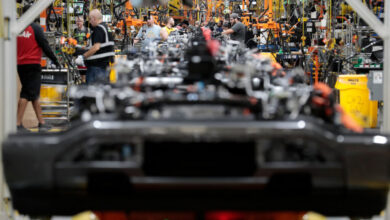Coordinating transition to electric vehicles needs a jump start

If Illinois wants to meet Gov. J.B. Pritzker’s goal of 1 million electric vehicles on the road by 2030, more needs to be done.
The state has made progress. As of last month, the state passed 100,000 EV registrations, which is a bunch more than the 8,000 as of November 2017. But it’s not 1 million.
Changes are in the works. As soon as Friday, the U.S. Treasury Department is expected to unveil final rules that will help get a $7,500 tax credit for buying certain electric cars, which is a step forward for the Biden administration’s effort to increase EV sales.
But on Wednesday, it was reported Tesla is suddenly pulling back from installing electric vehicle chargers around the nation. That’s a step back. Today’s spotty charging infrastructure is perhaps the biggest impediment to luring new EV buyers.
Significantly increasing the percentage of electric vehicles on the roads is an important way to help reduce climate change. But there are a number of roadblocks.
Last year, the state allocated money to install enough fast-charging ports to meet 25% of the state goals. The 2021 Infrastructure Investment and Jobs Act in 2021 provided $7.5 billion to build charging stations and associated infrastructure.
But many would-be EV drivers fear that won’t be enough to ensure they can avoid spending an inordinate amount of time at low-level chargers to juice up, or perhaps run out of electricity altogether.
Drivers say they juggle as many as 10 apps to find the closest high-power charging stations, only to find they are out of service. That contributes to so-called “range anxiety,” in which EV owners worry they can’t charge up on long trips in a reasonable amount of time.
Ideally, enough chargers would be available so that people can load up their batteries while visiting such places as grocery stores or churches, instead of waiting around for perhaps a half hour at a charging station. But local businesses need incentives to install those chargers because people who charge up in their driveways or garages aren’t providing commercial support for nearby charging ports.
Moreover, the fund that provides state credits for EV purchases runs dry until it is renewed. That means someone considering buying an electric vehicle can’t count on getting the credit.
Some people living in some frigid areas in northern Alaska or Canada have long kept their internal combustion engines warm by plugging block heaters into handy exterior outlets when they park outside businesses or other locations. EV charging should be just as easy.
Both Illinois and the federal government need to do a better of job of coordinating and improving the entire EV ecosystem to make the transition to electric cars go as fast as possible. The process needs to be simple for new buyers and motorists, not intimidating.
The Sun-Times welcomes letters to the editor and op-eds. See our guidelines.



